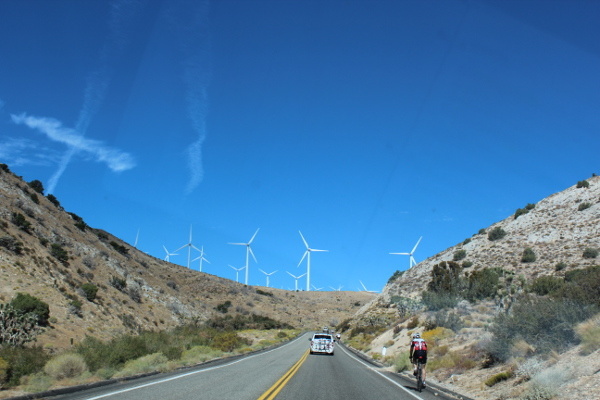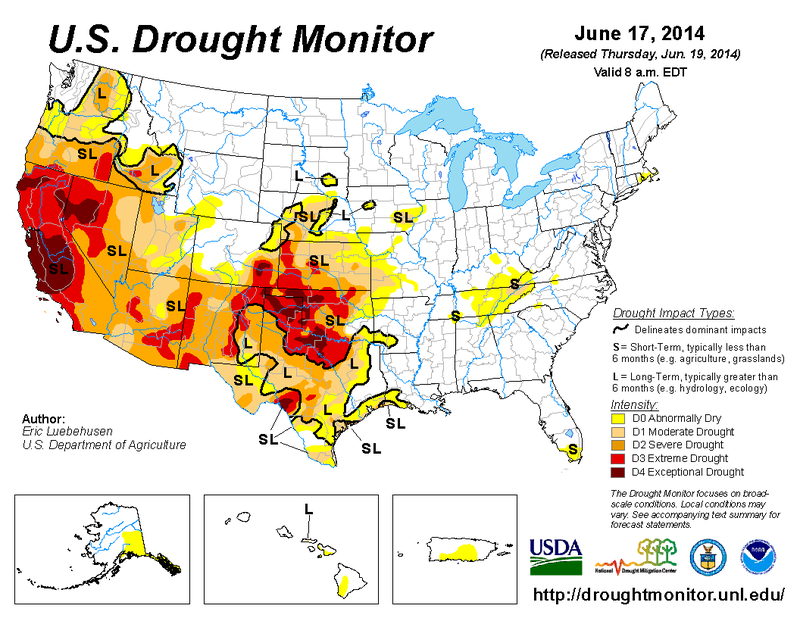News Release from American Clean Power Association (ACP)
Wind Industry Profile of
AWEA Blog - Into the Wind: Record wind output helping keep the lights on during record drought
In 2008, the nation’s thermal power plants withdrew 22 to 62 trillion gallons of freshwater from rivers, lakes, streams, and aquifers, and consumed 1 to 2 trillion gallons. By displacing generation from these conventional power plants, U.S. wind energy currently saves around 35 billion gallons of water per year, the equivalent of 120 gallons per person or 285 billion bottles of water.
Wind energy’s water-saving benefits have received increased attention in recent weeks, with record wind and solar output helping to keep the lights on amidst the severe drought afflicting California and a new Department of Energy report focused on the energy-water nexus:
Record wind output conserving water and keeping the lights on in California
California is currently facing a record drought, and unfortunately climatologists view this as a harbinger of coming climate change. As of June 1, California’s precipitation stood at only 61 percent of average, the remaining snowpack was around 2 percent of average, and the state’s main reservoirs held only 50-70 percent of their average water storage.
The drought has taken a toll on California’s hydroelectric generation, though wind energy is helping to pick up the slack. Through the end of April, California’s year-to-date hydroelectric generation stood at 3,981 GWh, down 3,475 GWh or 47% from the 7,456 GWh produced during the same period last year. Wind generation more than made up for that shortfall, providing 3,955 GWh through the end of April. California wind generation has grown more than 150 percent from the 1,550 GWh California produced during those same months in 2009.
As evidence of wind energy’s growth in California, the state grid operator set a new wind energy generation record of 4,768 MW on April 12 at 5:48 PM. This eclipses the previous record of 4,302 MW, which was set on June 23, 2013.

While the drought is imposing major costs on the state’s agriculture and Californians in general, the drought also poses challenges for electric reliability because the electricity system is so heavily dependent on water. The California grid operator expects 1,370 MW to 1,669 MW (18-22 percent) of the state’s 7,666 MW of hydroelectric power plants to be unavailable to provide energy to meet peak system demands this summer. Moreover, the grid operator notes that 1,150 MW of the state’s thermal power plants are at risk of having cooling water supply curtailments this summer.
In addition to directly offsetting freshwater consumption at thermal power plants, wind energy helps combat the impacts of drought by allowing grid operators to save hydroelectric energy (in the form of water behind dams) until they need it to meet grid reliability needs. A MWh of wind energy almost always displaces a MWh that would have been produced by a fossil-fired power plant, though sometimes grid operators use wind energy to store additional water behind dams where it can be used later to displace fossil fuel generation. While a number of complex factors affect how dams use their water resources, the abundant supply of wind energy this spring has likely alleviated pressure on the operators’ need to use water to produce electricity, helping them maintain reservoir levels so they can continue producing power and providing grid reliability services through the summer. In addition, in most regions the variability of the wind energy resource from year-to-year is much lower than that of the hydroelectric resource, so adding wind energy improves the reliability and resilience of the electricity system.
DOE report on energy-water nexus highlights water-saving benefits of wind
Last week, the Department of Energy released an in-depth report that explores the many ways our energy and water resource systems are intertwined. A primary finding of the report, first mentioned on page 2 and repeated several times throughout, is that “Some renewable energy sources—such as photovoltaics (PV) and wind energy—require very little water.” This is reinforced in the “key messages” box at the beginning of Chapter 2, which notes that “Some emerging technologies, such as carbon capture, have the potential to increase energy's water intensity; others, such as wind and PV can lower it.”

The Union of Concerned Scientists’ large body of work on the energy-water nexus also illustrates that wind energy plays a vital role in diversifying our energy mix away from water-intensive sources, making our energy system more resilient in the face of increasing climate-induced drought risk. One UCS report highlights how severe droughts in Texas, the Midwest, and the Southeast have forced conventional generators offline by restricting cooling water resources during periods of peak electricity demand.
These events further underscore that the power system is most reliable with a diverse mix of energy resources, and that adding zero fuel use and virtually zero water use wind energy to the mix makes the system more reliable while protecting consumers from unexpected scarcity events.
- Source:
- Into the Wind - the AWEA Blog
- Author:
- Michael Goggin
- Email:
- windmail@awea.org
- Link:
- www.awea.org/...
